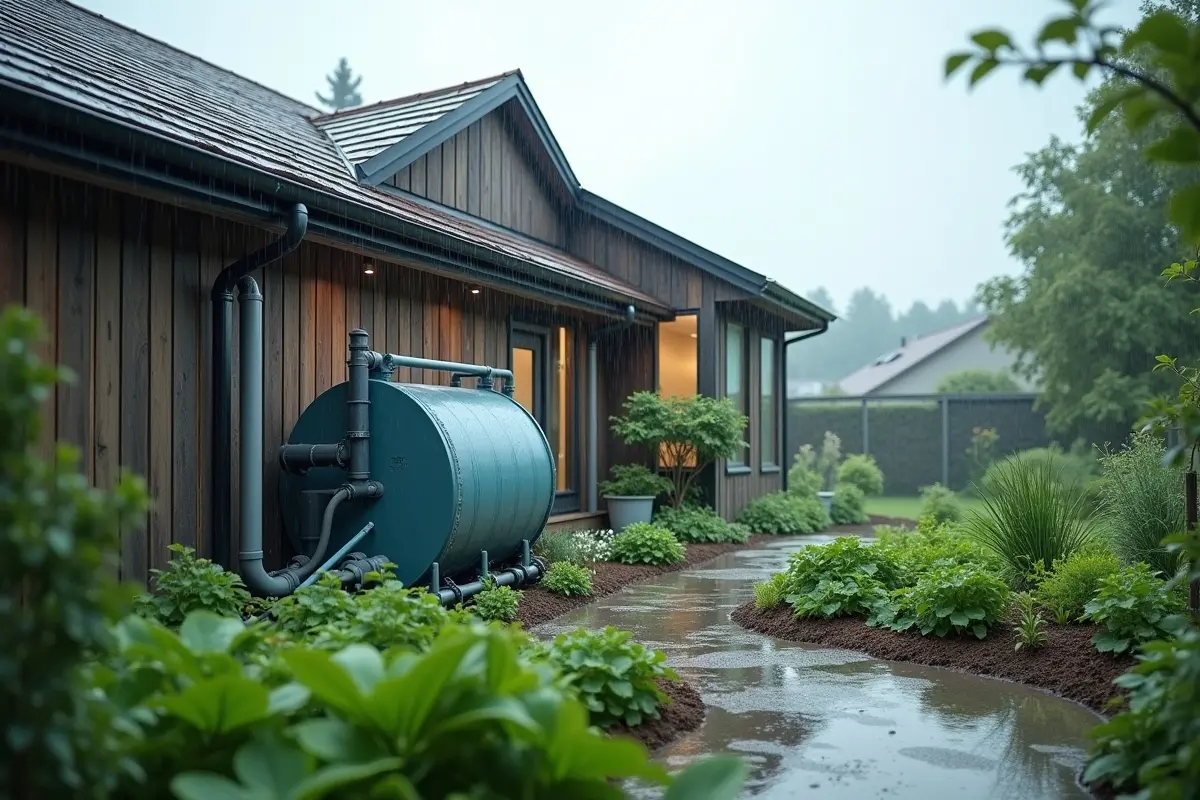How Rainwater Management Systems Reduce Flooding Risks
Effective management of rainwater plays a crucial role in reducing flood risks, especially in expanding urban environments where impervious surfaces are prevalent. As cityscapes expand, the land’s ability to absorb and regulate runoff declines, leading to increased flood vulnerabilities.
To tackle this issue, many local authorities and property owners are turning to innovative rainwater management systems that address flood risks while promoting environmental health. In certain situations, acting swiftly with professional restoration services is crucial for mitigating immediate flood impacts and protecting property.
Rainwater management is not just about keeping water away but also about channeling it where it can do the most good. Cities that implement solutions such as rain gardens and green roofs discover they can offset damage and improve urban resilience.
These sustainable infrastructures do more than buffer against rising water; they enhance neighborhood green spaces, filter pollutants, and contribute to a more attractive environment for everyone. When these systems are tailored to local climates and integrated with existing infrastructure, they prove invaluable for disaster prevention and water conservation.
Understanding Rainwater Management Systems
Rainwater management systems are a collection of techniques and structures that collect, divert, absorb, or reuse rainwater. Their primary objectives are to minimize surface runoff—thereby decreasing the volume and speed at which water reaches drains—and to increase the likelihood that water will be absorbed into the ground. These systems can range from simple home installations to large-scale municipal projects.
By managing rainwater in this way, cities can alleviate pressure on outdated sewer infrastructure and reduce the likelihood of combined sewer overflows during storms. As noted by industry leaders and organizations, such as the U.S. Environmental Protection Agency, implementing these solutions can have wide-ranging benefits for both cities and their citizens.
Green Roofs: A Natural Sponge
Green roofs are living systems installed on building rooftops, designed to capture and temporarily store rainwater in their plant substrate. These systems can retain up to 75% of rainfall, which is later released back into the atmosphere through evaporation and transpiration.
By minimizing direct runoff from roofs, green roofs not only help mitigate flooding in densely built environments but also improve local air quality and dampen the urban heat island effect. According to National Geographic, green roofs are increasingly being adopted worldwide for their ecological benefits and ability to make cities more livable.
Rain Gardens: Enhancing Infiltration
Rain gardens are shallow, vegetated basins that absorb runoff from hard surfaces, such as driveways and parking lots. By allowing water to percolate into the soil, these gardens reduce both the amount and speed of runoff, effectively lowering the risk of flash floods after heavy rains.
An added benefit of rain gardens is their ability to filter out pollutants, contributing to cleaner groundwater and downstream water bodies. Such eco-friendly landscaping can be introduced in private yards, school campuses, or public parks, enhancing both storm resilience and the visual appeal of urban spaces.
Permeable Pavements: Allowing Water to Seep Through
Unlike conventional concrete, permeable pavements are designed with gaps or porous surfaces that permit rainwater to seep through, reaching the soil below. These systems have been shown to cut runoff by up to 80%, making them invaluable in areas prone to frequent flooding. Cities like Rotterdam and Chicago have successfully integrated permeable pavements into streets and parking lots, resulting in fewer incidents of waterlogging and lower maintenance costs for drainage networks.
Rainwater Harvesting: Capturing and Reusing Rainwater
Rainwater harvesting is the practice of collecting rainwater from rooftops and storing it for future non-potable uses such as landscape irrigation or toilet flushing. By intercepting massive volumes of rain that would otherwise flow into storm drains, this method not only curbs the risk of flooding but also reduces dependence on municipally treated water.
Research from cities like Melbourne demonstrates that widespread rainwater harvesting can slash flood-related costs by up to 30%, making it a financially sound and environmentally responsible choice for households and businesses alike.
Implementing Rainwater Management Systems
Success with rainwater management starts with careful planning. The first step is a site assessment to understand the specific needs and risks of an area. Next, appropriate technologies—such as green roofs, rain gardens, permeable pavements, or harvesting systems—should be selected based on the local climate, soil conditions, and the nature of existing developments.
Quality installation and routine maintenance are vital to long-term system performance. Equally important is involving community members and local stakeholders to ensure buy-in and foster stewardship over these shared resources.
Conclusion
Addressing urban flooding demands more than temporary fixes; it requires a broad adoption of sophisticated, nature-based solutions. By integrating rainwater management systems such as green roofs, permeable pavements, rain gardens, and rainwater harvesting, communities can dramatically reduce their risk of flooding, safeguard public health, and foster enduring urban resilience.
These strategies not only future-proof cities against extreme weather but also provide immediate benefits, such as improved air quality, increased biodiversity, and enhanced livability for all residents.

